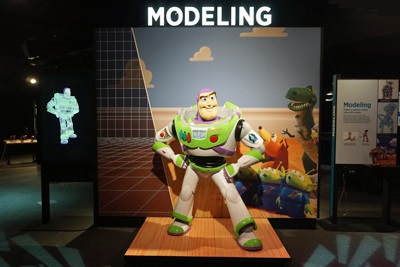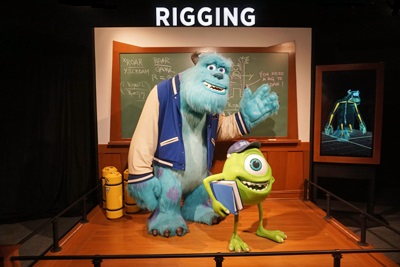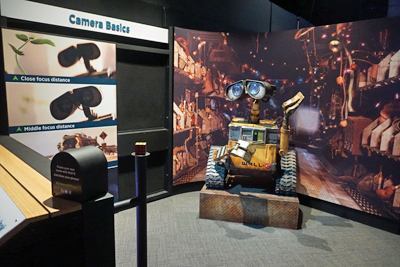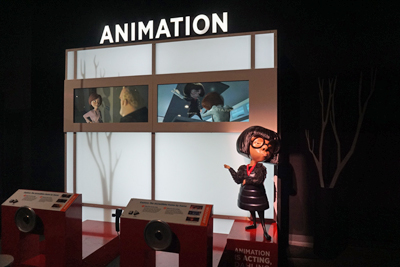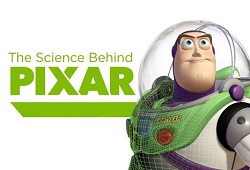
“To infinity and beyond!” Buzz Lightyear told his friend Sheriff Woody in the 1995 movie Toy Story, adding the phrase to the lexicon of the times. The film was the creation of Pixar Animation Studios and the first fully computer-animated motion picture to ever be released. Pixar followed up Toy Story with a succession of box office hits that have likewise entered our pop culture collective consciousness, including Finding Nemo, The Incredibles, WALL-E, and Monsters Inc.
While the classic Disney animated films from the mid-twentieth century – such as Fantasia, The Lady and the Tramp, and The Jungle Book – were painstakingly created by artists who drew each panel by hand, the films of Pixar have taken the two dimensional limitations of these artistic achievements and turned them into believable three-dimensional images that rely on computers rather than paper to craft their narratives.
The Disney trailblazers were known as the “Nine Old Men” despite being relatively young when they began their careers, a term used at the time to describe the justices of the U.S. Supreme Court. But who are these new trailblazers of Pixar, and how are they able to create such realistic animated characters like action figure Buzz Lightyear, fashion designer Edna “E” Mode, and scare monster James P. Sullivan?
In 2015, the Museum of Science in Boston teamed with Pixar Animation Studios to answer those questions with The Science Behind Pixar exhibit, which premiered at the Museum of Science before going on the road to engagements at the California Science Center in Los Angeles, the Museum of Science and Industry in Chicago, and the Carnegie Science Center in Pittsburgh.
“The Science Behind Pixar is an interactive exhibit that offers people an opportunity to understand how we make our films,” Jim Morris, president of Pixar Animation Studios, told Northshore magazine in 2020. “At Pixar, we use science, technology, engineering, art, and math – along with a significant dash of creativity and fun – and this exhibit is truly a great demonstration of how all those ingredients come together in our filmmaking process.”
The exhibit is centered around the nine pillars of “Pixar’s Production Pipeline” – Story & Art, Modeling, Rigging, Surfaces, Sets & Cameras, Animation, Simulation, Lighting, and Rendering – each of which correlates to a department at the animation studio. The individual sections within The Science Behind Pixar open with video introductions by actual computer programmers at Pixar, giving an overview of what they do as well as what led them to a career at Pixar.
While parts of the pipeline – such as scriptwriting, set design, camera movements, and lighting – overlap with traditional filmmaking involving physical actors and actresses, the piecing together of a computer generated motion picture is more complex, and although the basics remain the same, additional skill sets are needed as well.
Take lighting as an example. Regardless of what type of film is being created, lighting is an important part as it enhances the atmosphere of a scene. While lighting a physical set may be relatively easy, providing the right lighting for animation is more nuanced. The Science of Pixar explains the process through hands-on displays that allow visitors to adjust the lighting on a computer screen using direct light, bounced light, and four other categories.
Shadows are likewise relatively easy to create in live-action filmmaking but more complicated in animation. A blow-up of a scene from Pixar’s Cars shows the tow truck Mater fleeing from an explosion. As the exhibit points out, Mater’s lips block sunlight from reaching the upper part of his teeth and casts a shadow instead. This one small but important addition needs to be specially created to make the image realistic. The flames from the explosion, meanwhile, cast a yellow glow on the rear side of Mater, a special effect that likewise needs created separately.
The other sections of Pixar’s Production Pipeline offer similar examples of the complexities of animation versus traditional filmmaking. The crafting of each character is particularly challenging. Not only does the process incorporate three aspects of the pipeline but three artistic mediums as well. A character first takes shape within the imagination of the writers. From there, sketch artists create storyboards that loosely detail the sequence of the film. To give each character more than a two-dimensional rendering, meanwhile, three-dimensional sculptures are physically created, many of which are on display within The Science of Pixar.
After a sculpture – called maquettes – is completed, it is digitally scanned and a “modeler” creates a virtual three-dimensional model, replete with wireframe points and the edges that connect them. The virtual models are then passed on to “riggers,” who create virtual bones, joints, and muscles. These “rigs” detail the relationship between various parts of the body and dictate how they move, making it easier to control the character’s motion during the animation stage. The Science of Pixar notes that Mike Wazowski from Monsters Inc. has seven thousand rigging controls, the equivalent of seven thousand strings on a marionette.
While The Science of Pixar is both interactive and educational, it also offers a fair amount of selfie opportunities, with the likes of Buzz Lightyear from Toy Story, Edna “E” Mode from The Incredibles, James P. Sullivan and Mike Wazowski from Monsters Inc., WALL-E, and Dory from Finding Nemo sprinkled throughout the exhibit space. Snapping a photo beside one of these life-size statues adds to the appreciation of the process that brought the characters to life.
It takes certain skills and a fair amount of science to complete an animated motion picture, and the rewards are in the details as well as the reactions from a fully packed theater. Based on the box office success of numerous Pixar films, the animation studio has truly found a way to go “to infinity and beyond!”
Anthony Letizia
